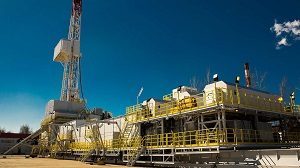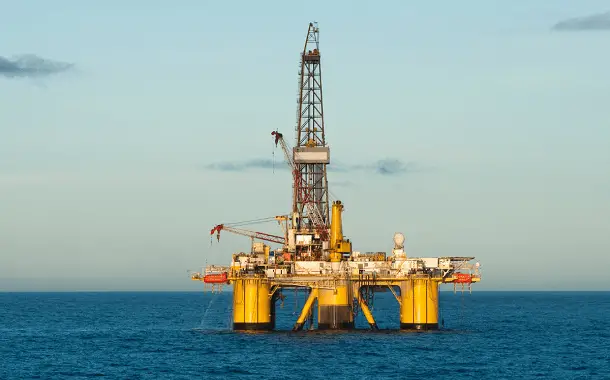Oil Rig Cost
Oil rigs are a necessary tool in exploring, extracting, and refining oil deposits both on land and at sea. If you live in a coastal town, especially one that contains oil refineries, you may see oil rigs on the shores of your local beach.
How Much Does an Oil Rig Cost?
It is really expensive to build an oil rig. The costs may start at around $21 million and go up to even more than $1 billion. The most significant investment has to be made with the drilling equipment. This is why the oil producers need so much money and time. In the 19th century, the modern process of drilling began and improved over time and became even more efficient in the 20th century with the progress made in oil drilling rig technology.
The complexity and the depth of the well will influence the costs as well. Expect to pay more than $4,200 for drilling a modern well.
It takes almost 30 to 40 different individual companies to fully complete a modern drilling project.
Types of oil rigs
Oil rigs are classified into offshore rigs and land rigs. Oil producers who drill oil from land are facing significant costs with getting infrastructure access for water, electricity, and roads.
There can be land-based drilling rigs of various powers, sizes and can be used in different applications.
The cost of the onshore and land oil drilling
A land rig or an onshore rig is a drilling rig made specially to drill holes in ground locations. The installation can be a small one that can be easily moved from one place to another or can be a large industrial structure with all the drilling tools and equipment.
In general, the cost of land drilling starts at around $20 million and can go up to $26 million.
The growing demand for global exploration, fossil fuels, and production activities affect onshore drilling. The demand for drilling equipment is not greatly influenced by the processing and intervention activities because there are other technologies and methods of intervention available for wells.
Though, a larger number of wells does not mean a larger number of rigs. Fewer facilities will be needed for the newer constructed rigs as these are more efficient.
The demand for onshore drilling rigs depends on the oil price volatility. During the industry downturn, fewer wells are usually constructed.
Throughout history, the largest market share was owned by North America, followed by Latin America and the Middle East. The most significant areas for land rigs are the Middle East, Kuwait, Saudi Arabia, and Oman.
The cost for offshore oil drilling
The offshore oil drilling platforms are mounted directly on the seabed. They can be used both for drilling and for exploitation or production.
This type of platform is particularly effective in shallow water but particularly expensive at greater depths. The smaller types, for drilling, are integral (with all the necessary installations) or assisted by a support vessel.
In the case of offshore drilling, the price of the drilling equipment represents around 90% of the total investment costs of an oil producer.
The costs of offshore rigs are 15 to 20 times higher than for land drilling rigs. In general, the cheaper offshore rig costs around $210 million, depending on the drilling depth. The costs will increase with the depth of the holes.
Factors that influence the oil rig construction cost
 In the United States of America, the oil rig construction cost starts at around $20 million and can go up to more than $26 million.
In the United States of America, the oil rig construction cost starts at around $20 million and can go up to more than $26 million.
If you want to construct or buy a specific rig the costs can be double. The cheaper oil rig in America is the small footprint land rig.
The oil rig construction cost is influenced by many factors such as the construction shipyard, the market conditions, the rig specifications, plus the design type and class.
Besides these, the cost also depends on the type of the contract, the scale economies, and the shipyard productivity, but it is hard to determine the nature of their influence.
There are also some other secondary factors such as the diameter of the well, the depth of the well, the drilling schedule, the casing, and the type of rock formation.
You might also like our articles about the cost of propane gas.
However, the most important factors that affect the cost of the oil rig construction are presented below.
Material prices
The rig construction process requires labor, drilling, steel, plus other tools and equipment. So, the expenses are distributed into these categories and the final construction cost is affected by the variation of each of these costs.
The final cost will be greatly influenced by the shipyard location as well. For example, the labor costs in America are higher and represent 30% of the total costs, while in China labor costs are lower and represent only 10% of the total costs.
The main component of the rig construction is steel and its costs are really variable over time. The final costs will increase when the steel prices are high, obviously.
Market conditions
Rig construction costs are influenced by the demand for construction services and the ability of shipyards to offer these services.
When there are positive investment signs of day rates and utilization rates, the drilling contractors demand the construction of new rigs.
There are only a few shipyards in the world that can construct rigs, and in periods with high demand, the costs of rig construction services increase in the market.
Site preparation costs
In most cases, the site requires the construction of roads and pavements for the heavy equipment to reach the wells.
It takes anywhere between 15 and 20 days or even longer to construct the necessary roads to a site. Expect to spend around $405,000 for the site preparation.
Service costs
The service costs may include the following:
- Mud logging – this represents the expenses associated with the rental of the mud logging unit and the engineers who operate the unit;
- Communication costs – this refers to the costs with the data transfer, telephone bills, and others;
- Cementing costs – necessary for renting the cementing unit and hiring the cement engineers;
- Rig positioning costs – this is required in the offshore operations;
- Surveying costs – these are the expenses for running surveys inside the hole in order to determine the hole angle;
- Wireline logging cost – this cost is for producing and running wireline logs;
- Downhole motors costs – this is for drilling long sections of vertical logs or directional drilling;
- Drilling measurement cost – these are the expenses for renting and running LWD and MWD;
- Mud engineering cost – this cost is required for maintaining mud products and for mud engineers.
The price of the equipment
The costs of the essential components of the rig are represented by the dynamic positioning system, the motors, the drilling equipment, the cranes, and the generator.
These materials are bought by the platform creator and installed on-site or at another location. The largest equipment cost is for the rig package and, in general, it is anywhere between $21 million and $71 million for elevators, while for the floats the cost is anywhere between $100 million and $200 million.
The cost of the equipment is influenced by the price of steel, as most of the equipment is made of steel.
Allowances
The drilling process is very unpredictable due to the uncertainty of the underlying geological formation and because of it, an important part of the budget for allowances should be allocated.
Labor cost
Another essential factor for the rig construction expenses is the productivity and labor cost. In the last years, these costs have increased and currently represent 10% to 15% of the total rig construction cost.
Drilling
Another important task that takes a lot of work and planning is the moving of the drilling rig to the construction site.
Expect to pay more than $4 million for drilling the wells, depending on the complexity and depth of the well.
Rig mobilization
The drilling rig has to be moved in and assembled on-site during the drilling process. This operation takes 2 to 3 days in general and the costs depend on the distance on which the rig has to be moved. The average cost would be anywhere between $100,000 and $355,000.
Rig construction on contracts
An oil rig can be constructed by a drilling contractor that has or does not have a firm contract commitment from the A&P Company. Drilling contractors tend to be more aggressive in negotiations when building a speculative rig. The investment costs will increase if the building of the platform is based on speculations.


Leave a Reply
Want to join the discussion?Feel free to contribute!